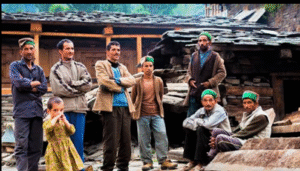
Why in News?
-
A woman in the Sirmaur district of Himachal Pradesh married two Hatti brothers, reigniting legal and public discussion about the tribe’s long-standing polyandry practice known as Jajda or Jodidara.
Concerning the Hatti Tribe:
The Hattis: Who Are They?
• The Trans-Giri region and Jaunsar Bawar in Uttarakhand are home to the Hattis, a Scheduled Tribe (ST) recognised in Himachal Pradesh.
• Their historical function as vendors in haats (rural markets) where they offered local meat, wool, and produce is where they got their name.
Polyandry: What is it?
• One woman marrying more than one man is known as polyandry.
• It comes in two primary varieties:
-
Fraternal (Adelphic): Every husband is a brother.
-
Non-Fraternal: Husbands share women on a rotating basis and are not related.




